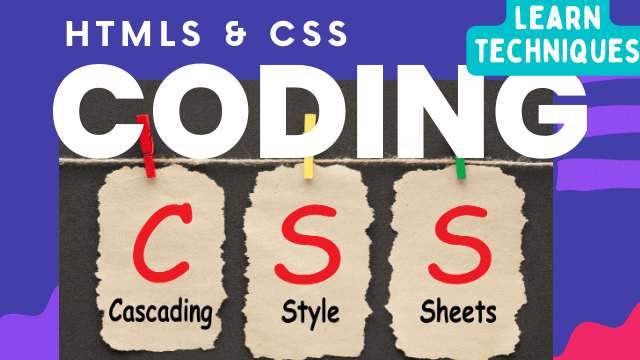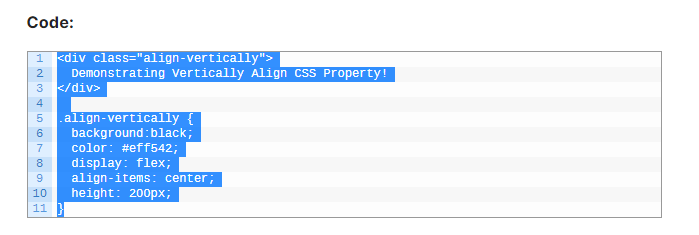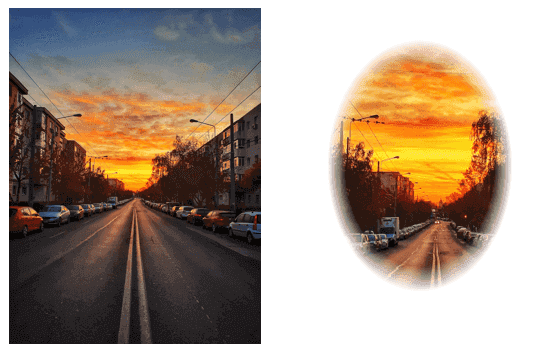
What CSS Stand for?
CSS describes how HTML elements should be presented on the web page. It provides colors, positions to the HTML elements, etc., create animations, and amplify your web page. Developers and web designers are intrigued by ways to try out advanced CSS tricks and techniques and contribute to improving what CSS can do.
As CSS is becoming more dominant, there are many opportunities developers and designers can use to create engaging and browser-compatible websites.
In this CSS tutorial, explore some advanced CSS tricks and techniques to help you master your updated web design and development skills in 2023.
Benefits of Advanced CSS Tricks
Advanced CSS tricks can provide many benefits, including improved design and layout of web pages, enabling developers to create more complex responsive web applications. Overall, advanced CSS tricks can help create more polished and cross-functional websites and web applications.
Several responsive and lightweight CSS frameworks are frequently in use by developers and designers that make it simpler to add visual elements like forms, buttons, panels, breadcrumbs, etc., and implement functions. It simplifies the process of creating websites. Regardless of the browser versions, these websites will work efficiently. As a result, there will be less chance of coding errors during cross browser testing.
The availability of ready-made style sheet frameworks substantially speeds up project implementation and simplifies web development. Users may accomplish the required activities by spending little time studying and immersing themselves in CSS code.
Another benefit is the ability to create a user interface that is both user-friendly and aesthetically pleasing, with the flexibility to change it during project updates without having to start from scratch.
Best Advanced CSS Techniques for Web Developers
Let’s start with our list of the best advanced CSS techniques for 2023.
1. Responsive CSS Grids
While taking care of the responsive design, you need to ensure the grid is responsive. Responsive CSS grid is one of the advanced CSS tricks that offer different ways of creating a customizable grid irrespective of the device. The most reliable thing is that the CSS grid operates with equal or unequal column sizes.
After making the CSS grid responsive, test it for responsiveness. For that, you can leverage LT Browser 2.0, a Chromium-based mobile-friendly tester, to test your CSS grid’s responsiveness to ensure it is automatically adjusted to different device viewports.
With LT Browser 2.0, you can try the responsiveness of the CSS grid across 50+ pre-installed devices like mobiles, tablets, desktops, and laptops and leverage some of its features like side-by-side comparison, generate performance reports powered by Google Lighthouse, get JavaScript error reports, etc.
2. Vertically Align with Flexbox
There are very few CSS tricks available to vertically center elements in CSS. It has been a pain point for many developers. Vertically aligned with CSS Flexbox is an advanced CSS trick and technique by which developers can align effortlessly with the align-items, align-self, and justify-content properties.

Output:
Demonstrating Vertically Aligh CSS Property
3. SVG for Icons and Logos
SVGs means Scalable Vector Graphics, an XML-based image format for vector graphics on the web. Using SVGs is one of the advanced CSS tricks that offers benefits over PNGs images like higher resolution, faster speed, and better animation quality.
As SVGs are supported by all new browsers and scale across all resolutions, it’s recommended not to incorporate .jpg or .gif images for icons and logos.
Syntax:
4. Masking
Let’s say you want to use an image but only want to show certain parts of it. You can achieve this using the mask-image property. CSS masking is among the advanced CSS tricks that allow you to define a mask shape applied to the image. Anything that appears outside the mask shape is cut out, and the rest is presented. It works pretty much the same as masking in Photoshop.
Anything 100% black in the image mask will be displayed entirely, whereas anything 100% transparent will be completely hidden, and anything in-between will be partially masked in the image.
You can perform Masking using two ways.
- Using Gradients (Linear and Radial)
- Masking with images
Example of Linear Gradient Masking:
The left side is the image’s original image, and the right side is a masked image with a linear-gradient.

Example of Radial Gradient Masking:
| 123 | }#masked{-webkit-mask-image: radial-gradient(ellipse 20% 90% at 27% 50%, black 40%, transparent 50%);mask-image: radial-gradient(ellipse 20% 90% at 27% 50%, black 40%, transparent 50%); |
In the below image, the left side is the original image, and the right side is a masked image with radial-gradient.

5. Shape Outside
Shape-outside is an advanced CSS trick that lets you change the shape of the items wrapped around it instead of being restricted to a rectangular box.
The shape-outside property allows shaping the content to fit the image. It takes a basic shape and applies a shape function to the item. This property works only for floated elements.
Syntax:
| 1 | shape-outside: values; |
Code:
| <section class=”shape-outside”> <div class=”shape-outside__circle”> </div> <h2>Shape Outside CSS Property</h2> <p> Morbi tincidunt lectus non feugiat tristique. In blandit ornare odio sit amet cursus. In mollis dictum mollis. Suspendisse sed sagittis sem. Morbi </p></section> body { display: flex;} .shape-outside { padding-right: 10px; width: 50%;} .shape-outside__circle { height: 150px; width: 150px; border-radius: 50%; background-color: #DC143C; margin: 25px 25px 5px 0; float: left; shape-outside: circle();} |

6. Zoom on Hover
Zoom on hover is an advanced CSS trick that makes web pages more attractive. The zoom-on-hover effect can be used in galleries, selling products where you need to enlarge the image to have a better view.
The CSS transform property is used to enlarge images with your selected scale amount.
Syntax:
| 1 | transform: scale [transition-duration] [transition-timing-function] [transition-delay]; |
Example:
| 123 | img:hover { transform: scale(1.1);} |
7. Scroll Snapping
CSS Scroll Snap is another advanced CSS trick that allows the developer to create well-controlled scroll experiences. This property can be used in the gallery section of the web page. Page scrolling in CSS is controlled by setting a scroll-snap-type property on a container element. The scroll-snap-type decides scrolling has to be done, i.e., either x or y.
Syntax:
| 1 | scroll-snap-type: [none | x | y] [mandatory | proximity]; |
In the above syntax, ‘mandatory’ means the browser has to snap to a snap point whenever the user stops scrolling. The proximity is less strict. It allows the browser to a snap point if it seems appropriate.
Example:
| 123 | .y-scrolling { scroll-snap-type: y mandatory;} |
The above example shows scroll-snap-type along the Y-axis with mandatory value.
8. Variable Fonts
Variable fonts are the built-in latest upfront. It’s a single file comprising every font version a user will need to view the design. While there are only a few lists of variable fonts to work with, it is growing, and this is where we are going with typing on the web.
We must select a font that supports the feature and a browser that has implemented the font-variation-settings property to implement variable fonts.
Syntax:
| 1234567 | @font-face {font-family: ‘Roboto Flex’;src: url(‘RobotoFlex-VF.woff2’) format(‘woff2 supports variations’), url(‘RobotoFlex-VF.woff2’) format(‘woff2-variations’);font-weight: 100 1000;font-stretch: 25% 151%;} |
9. Generate Text Animation
CSS Animation is one of the popular advanced CSS tricks and techniques that can bring creativity, grab the user’s attention, and convey things quickly while improving usability. The way users read and interact with text elements is changing due to CSS, from hover tweaks to words that float in or scroll on the page.
What was previously a static element can now have a dynamic display. It’s also a relatively popular option for websites with few other creative elements to draw users. Some of the most popular text animations are
- Dropping Text.
- Typing Text.
- Neon Text.
- Floating Text.
- Rotate Text.
10. Initial Letter
Initial letter is an advanced CSS trick that selects the first letter of the paragraph and mentions the number of lines occupied by the letter. Usually, it is used to grab the attention of print media and information sites, news sites, where the first letter of the paragraph is much larger or higher than the rest of the content.
The initial-letter CSS property spontaneously adjusts the number of lines needed to create the stylized drop and the font size.
The initial-letter property uses the following values:
- < number >: refers to the number of lines the letter uses not to accept negative values.
- Normal: it is useful only if you want to reset the value if it could be inherited from the cascade and no scaling effect is applied to the initial letter.
- < integer >: determines how many lines should sink when the letter size is preset. The values must be greater than zero; if the value is not specified, the size value is duplicated and floored to the nearest positive whole number.
Comment (3)
-
great blog.. i like social media poster
-
Such a wonderful artical, great tools for social media sharing./p>




Saira Ali
December 03, 2022